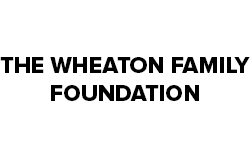GRADE 3 CITIZENSHIP STUDIES SELF, COMMUNITY, AND PLACE
Part A: Curricular Connections and Background
BROAD AREA OF CITIZENSHIP
A person’s “sense of place” develops through experience and knowledge of the history; geography and geology of an area; the legends of a place; and, a sense of the land and its history after living there for a time. Developing a sense of place helps students identify with their region and with each other. A strong sense of place can lead to more sensitive stewardship of our cultural history and natural environment.
In this area of study, students will examine the responsibilities that are inherent in all of these relationships. Students are encouraged to act on issues that are explored so that they can move toward becoming justice-oriented citizens. Because this area of citizenship begins with self and exploring issues of citizenship it is the primary area of focus for primary and elementary students.
OVERVIEW AND DESIRED RESULTS OF CITIZENSHIP STUDY
Students continue to demonstrate respect for themselves and others and begin to address issues of bullying and injustice. Students practice skills of empathy and appreciate that people have different points of view on the same topic. They continue to develop ways of dealing with differences of opinion.
Appreciation for national, provincial, and community symbols and traditions of citizenship is expanded. Students extend their use of maps and globes to represent the Earth and consider why people choose to live and settle where they do.
ENDURING UNDERSTANDINGS OF CITIZENSHIP STUDY
- Enduring understandings are the big ideas that stimulate thinking, guide the inquiry and are linked to outcomes.
- Essential questions point to the “big ideas’ in the inquiry and should be considered and reconsidered as the inquiry progresses.
- Answers to these questions form the evidence of learning at the end of study.
- Decision-making is a complex process with far-reaching impacts and is influenced by history.
- A person’s worldview frames their understanding of the world.
- Citizens value the need of the collective common good and consider how their actions impact the collective well-being.
- Governments and the people who elect them are responsible to one another.
- Empathy and respect for diversity in cultural and social groups help strengthen one’s community and require appreciation of different perspectives.
- Individuals have the power to affect others and make a difference.
- Canada has a long relationship with First Nations Peoples through treaty relationships.
- Societies create rules, written and unwritten, to promote order that leads to inclusion or exclusion and are enforced by social behaviours and expectations.
- Belonging requires participation and is a fundamental right of all citizens.
- Active citizens become engaged in discussions, negotiations, debates and consider action regarding Canadian issues.
Inferences to make
- Bystanders positive intervention likely stops bullying.
- Empathy means understanding and appreciating another person’s perspective (i.e. Stop teasing when it’s gone too far).
KNOWLEDGE AND SKILL DEVELOPMENT
- How to identify empathy
- That the rules for belonging vary depending on the context of the group.
Students will continue to develop skills for:
- Comparing and contrasting
- Classifying
- Explanation
- Looking for alternate points of view.
Students will use their learning to:
- Develop skills for treating self and others with respect
- Demonstrate empathy in social situations
- Continually reassess where and how they belong (changing contexts/roles and expectations) i.e. school, family, community
- Examine their responsibility to self, community, and place.
ESSENTIAL QUESTIONS
- What are the rules for belonging and how are they developed an enforced?
- How do you control the impact of your actions/decisions?
- How does empathy contribute to citizenship?
- What power does the individual have to make a difference in the world?
- What responsibility do you have to balance personal needs with the community’s needs?
CURRICULUM OUTCOMES AND INDICATORS
Outcomes (Sask. Curriculum/Student Friendly)
RW3.2
Analyze the creation and distribution of wealth in communities studied.
Indicators:
- Assess the role of work in communities, including the value of paid and unpaid work.
- Define the term natural resources, and differentiate between renewable and non-renewable resources.
- Determine reasons for acquisition of wealth in communities studied.
- Identify how wealth is defined and acquired in communities studied.
- Investigate and compare the distribution of wealth in communities studied.
RW3.3
Evaluate the ways in which technologies have impacted daily life.
Indicators:
- Recognize that technology includes more than electronics (i.e., paper, forging steel, manufacturing, vehicles, making cloth, products created for construction).
- Give examples of technologies in communities studied (e.g., communications, transportations, housing, food acquisition, preparation and storage, construction manufacturing), and categorize the influences of the application of the technology as positive or negative.
IN3.3
Illustrate examples of interdependence of communities.
Indicators:
- Research the origins of products and items used by students in the local classroom.
- Provide examples of ways in which student choices and actions may affect people elsewhere in the world) e.g., charitable donations, consumption of goods, recycling).
- Identify products produced locally and sold elsewhere.
DR3.3
Compare the beliefs of various communities around the world regarding living on and with the land.
Indicators:
- Research the view of land as held by indigenous peoples in communities studied.
- Identify ways in which people in communities studied interact with the land (e.g., meeting needs and wants, how lands is protected or neglected).
- Identify local environmental issues that affect life in communities studied.
- Compare environmental concerns (e.g., air quality, soil conservation, water availability and quality) common to both the local community and communities studied.
Overarching Outcome
DR3.1
Use various model representations of the Earth.
Indicators:
- Demonstrate understanding that the surface of the Earth can be represented through maps, aerial photographs, and satellite images.
- Identify geographic concepts including continents, countries, borders, hemispheres, and the equator.
- Locate and identify the continents and oceans on a map or globe.
- Locate and identify countries or regions studied on a map or globe.
DR 3.2
Assess the degree to which the geography and related environmental and climatic factors influence ways of living on and with the land.
Indicators:
- Identify the influences that geography has on societies (e.g., location of settlements, transportation of goods and people, types of industry such as farming, ranching, forestry, mining, tourism, and manufacturing).
- Recognized how environmental and climatic factors are influenced by location (e.g., proximity to water bodies influences precipitation and temperature; mountainous terrain influences soil formation, precipitation, and temperature).
© 2024 Concentus Citizenship Education Foundation Inc. All Rights Reserved.









